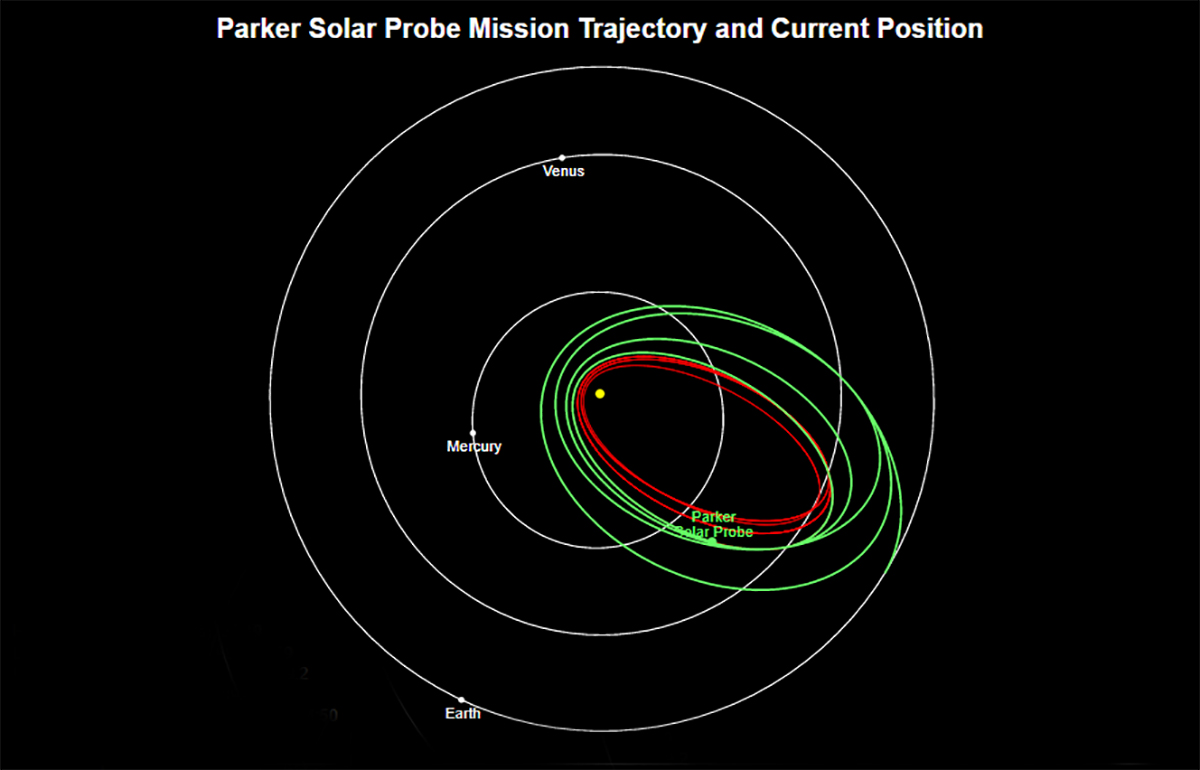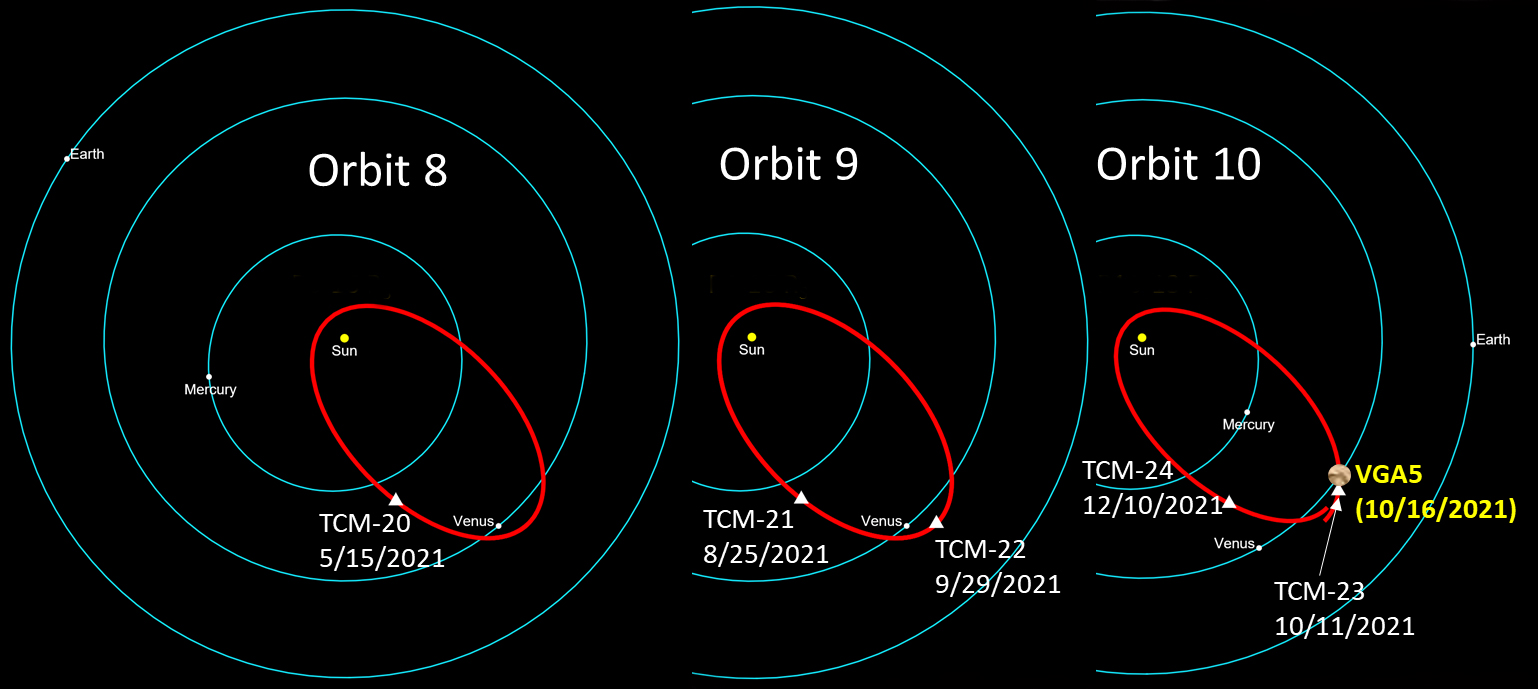Course Correction Points Parker Solar Probe to Next Venus Flyby
Posted on 2021-05-19 12:26:14NASA's Parker Solar Probe executed a small maneuver on May 15 that corrected the trajectory errors from a gravity-assist flyby of Venus in February -- and put the probe on newly optimized path for its next Venus gravity assist on Oct. 16.
The maneuver, monitored from the mission operations center at the Johns Hopkins Applied Physics Laboratory in Laurel, Maryland, lasted about 39 seconds and tweaked the spacecraft's velocity by 91 centimeters per second, or about 2 miles per hour. The difference might seem negligible to a spacecraft zooming around the Sun at 330,000 miles per hour, but it was actually enough to fine-tune Parker Solar Probe’s path toward the next three Venus gravity assists.
Parker Solar Probe just completed its eighth close approach to the Sun, coming within a record 6.5 million miles (10.4 million kilometers) of the Sun's surface on April 29. It'll pass the Sun from about the same distance again on Aug. 9, before using Venus' gravity on Oct. 16 to swing it even closer to the surface – about 5.6 million miles (9 million kilometers) -- on Nov. 21. Assisted by the remaining three Venus flybys, Parker Solar Probe will eventually come within 4 million miles (6.4 million kilometers) of the solar surface.
The team continues to track the spacecraft closely and will evaluate the necessity of other course-correction maneuvers over the next several months. Parker Solar Probe, which was designed and built at APL, is healthy and its systems are operating normally.
- Mike Buckley, Johns Hopkins APL

The graphic above marks Parker Solar Probe’s location on May 18. The green lines denote the spacecraft’s path since launch on Aug. 12, 2018; the red loops indicate the probe’s future, progressively closer orbits toward the Sun.
Credit: NASA/Johns Hopkins APL/Yanping Guo
High-Res Image
Diagram of Parker Solar Probe’s latest and next two orbits and close approaches – or perihelion – to the Sun. The diagram includes the dates and locations of planned trajectory correction maneuvers (TCMs) leading up to, and just after, the spacecraft’s fifth Venus gravity assist flyby – VGA5 – on Oct. 16. Having completed the TCM on May 15, the mission team will evaluate the necessity of the other course-correction maneuvers over the next several months.
Credit: NASA/Johns Hopkins APL/Yanping Guo
High-Res Image